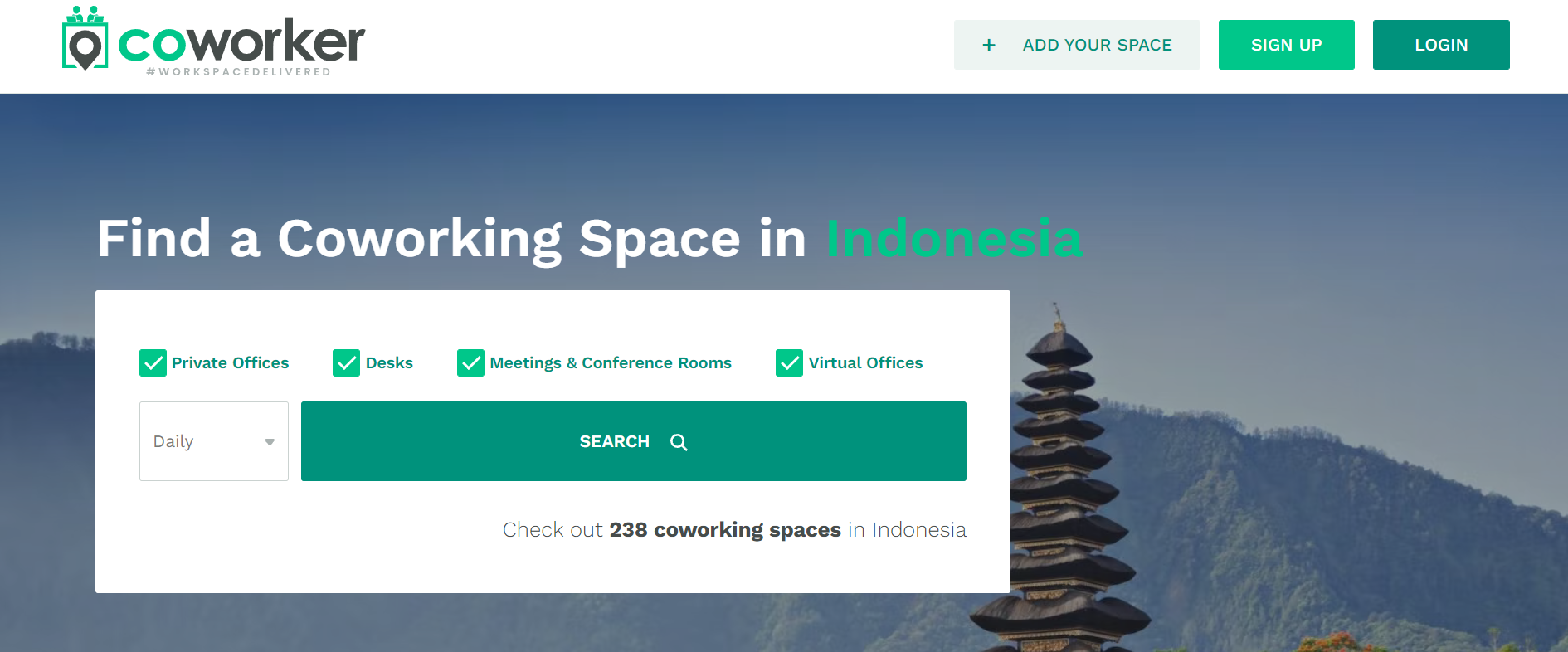Effectiveness of linguistic features for attracting audience: A study of coworking space websites’ headlines
DOI:
https://doi.org/10.21070/jees.v7i1.1647Keywords:
coworking space, linguistic features, website, headlineAbstract
The emergence of coworking spaces have disrupted conventional working lifestyle and built a new trend: shared office space which highlights community-based services. Our paper looks at how this new business promotes their service through advertising language in online media. Advertising language in previous studies have mainly focused on slogans found in printed advertisements (Pratiwi et al., 2019; Dubovičienė & Skorupa, 2014; Niken et al., 2013; Suryasa, 2016), but we focus on headlines in internet advertisements, particularly websites. The headlines were analyzed using linguistic feature theories in four levels: phonological, lexical, syntactic, and semantic levels. The analysis discusses the linguistic features used in the coworking spaces’ home page, the use of the linguistic features in the content, and the effectiveness in attracting readers. Data collected for the study include 59 websites from a coworking space reservation platform, Coworker, and interviews with people involved in the industry. Results of the study show that headlines in coworking space websites prominently use alliteration, noun phrases, and hyperbole. Unlike headlines of printed media, digital media has to comply with search engine optimization (SEO) guidelines so that search engines will index the website properly.
HIGHLIGHTS:
- Linguistic features used in website headlines have several elements in common with headlines in different ad channels, like TVs and printed ads.
- The main difference between headlines in a digital and printed advertisement is the use of search engine optimization (SEO) strategies in online channels.
- People’s educational and professional backgrounds can influence how they interpret headlines on websites.
Downloads
References
Anwar, S. T. (2015). Company slogans, morphological issues, and corporate communications. Corporate Communications, 20(3), 360–374. https://doi.org/10.1108/CCIJ-09-2013-0056
Arens, W. F., Weigold, M. F., & Arens, C. (2008). Contemporary advertising. Mcgraw-Hill.
Bisnis.com. (n.d.). Prospek Cerah, Jumlah Coworking Space Indonesia Naik 400 Persen - Bisnis Tempo.co. Retrieved May 18, 2021, from https://bisnis.tempo.co/read/1101327/prospek-cerah-jumlah-coworking-space-indonesia-naik-400-persen
Bouncken, R. B., & Reuschl, A. J. (2018). Coworking-spaces: how a phenomenon of the sharing economy builds a novel trend for the workplace and for entrepreneurship. In Review of Managerial Science (Vol. 12, Issue 1, pp. 317–334). Springer Verlag. https://doi.org/10.1007/s11846-016-0215-y
Buarki, H., & Alkhateeb, B. (2018). Use of hashtags to retrieve information on the web. Electronic Library, 36(2), 286–304. https://doi.org/10.1108/EL-01-2017-0011
Capdevila, I. (2014). Knowledge Dynamics in Localized Communities: Coworking Spaces as Microclusters. SSRN Electronic Journal. https://doi.org/10.2139/SSRN.2414121
Chevalier, S. (2021, July 7). Online sources for product searches worldwide 2020 | Statista. Statista. https://www.statista.com/statistics/1034209/global-product-search-online-sources/
Creswell, J. W. (2007). Qualitative inquiry & research design : choosing among five approaches. Sage Publications.
Cuddon, J. A. (John A., & Preston, Claire. (1998). A dictionary of literary terms and literary theory. Blackwell.
Develotte, C., & Rechniewski, E. (2001). Discourse analysis of newspaper headlines : a methodological framework for research into national representations. The Web Journal of French Media Studies, 4(1), 1–12. https://www.researchgate.net/publication/316282294_Discourse_analysis_of_newspaper_headlines_a_methodological_framework_for_research_into_national_representations
Dubovičienė, T., & Skorupa, P. (2014). The Analysis of some Stylistic Features of English Advertising Slogans. Žmogus Ir Žodis, 16(3), 61–75. https://doi.org/10.15823/zz.2014.013
Grey, D. D. (2008). Language in Use. Cambridge University.
Harper, M., & Cole, P. (2012). Member Checking: Can Benefits Be Gained Similar to Group Therapy? The Qualitative Report, 17, 1–8. http://nsuworks.nova.edu/tqr/vol17/iss2/1
Khan, S. (2014). Word Play in Destination Marketing: An Analysis of Country Tourism Slogans. Journal of Hospitality and Tourism, 27(1), 27–39.
Leech, G. N. (1972). English in advertising a linguistic study of advertising in Great Britain. Longman.
Mungkasa, O. (2020). Bekerja dari Rumah (Working From Home/WFH): Menuju Tatanan Baru Era Pandemi COVID 19. The Indonesian Journal of Development Planning, IV(2), 2020
Myers, G. (1994). Words in Ads.
Natkare, B. (2012). Linguistic Analysis of Contemporary Advertising. Indian Streams Research Journal, 1(XII), 1–4.
Niken, S., Made, P., & Yulia, F. (2013). An Analysis on the Language Style of the Utterances in Magnum Advertisements. LLT Journal: A Journal on Language and Language Teaching, 16(1), 31–40.
Pratiwi, D. P. E., Sulatra, I. K., & Candra, K. D. P. (2019). Bali tourism advertisements: a linguistic analysis. International Journal of Linguistics, Literature and Culture, 43–53. https://doi.org/10.21744/ijllc.v5n1.582
Ramachandran, V. (2021). Four causes for ‘Zoom fatigue’ and their solutions | Stanford News. https://news.stanford.edu/2021/02/23/four-causes-zoom-fatigue-solutions/
Skorupa, P., & Dubovičienė, T. (2015). Linguistic Characteristics of Commercial and Social Advertising Slogans. Coactivity: Philology, Educology, 23(2), 108–118. https://doi.org/10.3846/cpe.2015.275
Skračić, T., & Kosović, P. (2016). Linguistic Analysis of English Advertising Slogans in Yachting. Transactions on Maritime Science, 5(1), 40–47. https://doi.org/10.7225/toms.v05.n01.005
Surprenant, A. M., & Neath, I. (2009). Principles of memory. Psychology Press.
Suryasa, I. W. (2016). Figurative Language Found in Printed Advertisement. International Journal of Linguistics, Literature and Culture, 2(1). https://doi.org/10.21744/ijllc.v2i1.8
Taylor, R. (1981). Understanding the elements of literature : its forms, techniques, and cultural conventions. St. Martin’s Press.
Vasiloaia, M. (2009). Linguistic Features of the Language of Advertising. www.eukanuba-eu.com/
Ward, K., Gott, M., & Hoare, K. (2015). Participants’ views of telephone interviews within a grounded theory study. Journal of Advanced Nursing, 71(12), 2775–2785. https://doi.org/10.1111/jan.12748
Wells, W., Burnett, J., & Moriarty, S. (2006). Advertising: Principles and Practice. Prentice Hall.

Published
How to Cite
Issue
Section
License
Copyright (c) 2022 Maulidina Marlita Firdausi, Nurenzia Yannuar, Yazid Basthomi

This work is licensed under a Creative Commons Attribution 4.0 International License.







